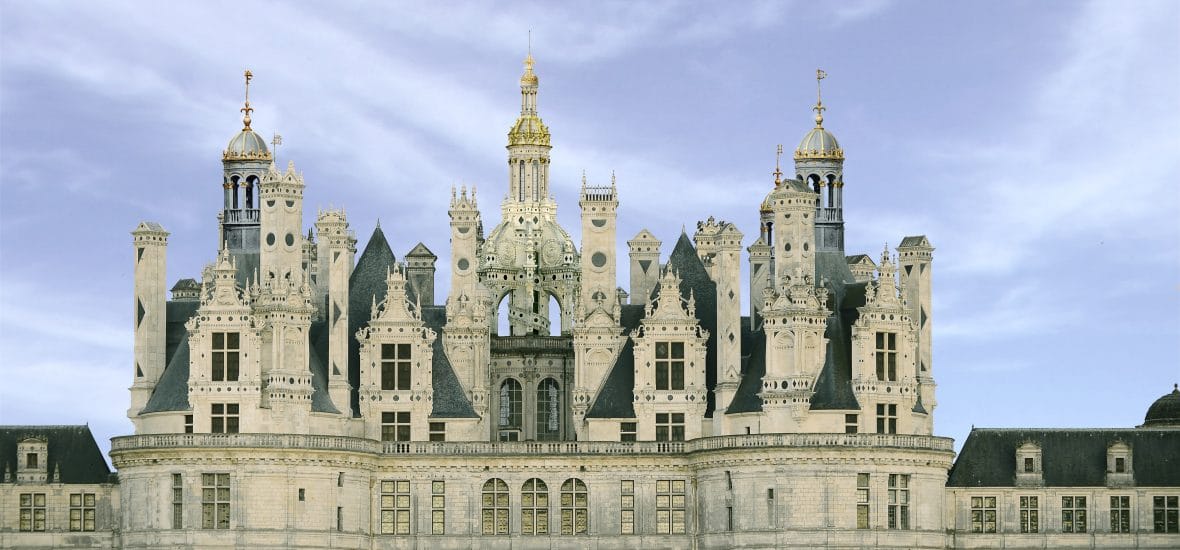Combining medieval architecture with the new modes of construction typical of the Italian Renaissance, Chambord brings to mind the fortified castles of yore. Indeed, Chambord drew inspiration and substance from the medieval imagination, chivalric romance and typical depictions such as those featured in the illuminations of the Très riches heures du duc de Berry. As it was conceived, in accordance with the wishes of François I, Chambord springs up from afar, and the visitor discovers the monument in the forest as an enchanted and enchanting castle. Its gold plating conjures up the heavenly character of the ideal city and recalls the royal essence of the edifice.
As early as 1540 under the reign of François I, the existence of the gold leaf gilding of the Chambord lanterns is attested by several eyewitnesses.
It remained in place until 1577.
The stone ornamentation characterizing the architecture of Chambord, and more particularly its terraces, at once glorifies the king and gives utterance to Romanesque imagination. The lapidary setting is complemented by exquisitely crafted leadwork ornaments that disappeared following the French Revolution. Largely reestablished during the 19th century, they were once again removed in the 1950s, which means that today’s Chambord is decoratively depleted, at least in comparison with the silhouette it displayed for close to 500 years.
At a later time, gilding of the lanterns by master craftsmen would spectacularly modify representation of Chambord in its natural environment, bringing back the original perception of Chambord, that is to say the esthetic shock it provoked with its gilded tips coming into view from above the treetops.
The first testimony to the existence of the leadworks is found in the following specification of the amount paid by the king to the gilder having applied his craft in Chambord :
“To Lazare Chanet, master goldbeater, paid in 1541, 18* of the thousand units of gold employed to gild the donjon leadworks”1.
“At the tip of this minuscule screw there is a lantern… And above it there is another, even smaller lantern… Both of them are covered with lead painted in gold and in blue, along with gilded globes and small flags. Atop the vault, the rooms form a terrace and the four towers soar pyramidally with a golden lantern…”2
1 André Félibien, le chasteau de Chamborg, extracted from Mémoires pour servir à l’histoire des maisons royalles et bastiments de France, 1681.
2 Text reproduced in : Jean Guillaume and Rafael Moreira, La première description de Chambord, in Revue de l’Art, Editions du CNRS, 1988, pp. 83-85. Source : Fernao Duarte de Monterroio, Mémoires dos sucessos de Portugal, fol. 36 and 36v, British Library, London.


We are at your disposal to establish tailor-made sponsorship.
Become a sponsor, make your entrance into History!
Cécile Anger
International sponsorship and
partnership manager
cecile.anger@chambord.org